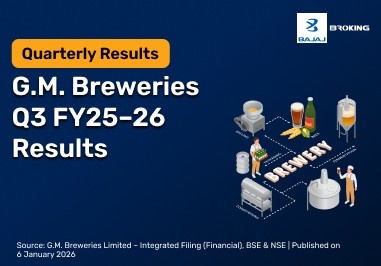Ever stared at the stock market screen and thought, “Should I stay for the long game or grab quick wins?” You are not alone. The Indian stock market offers you both — the thrill of short-term trading and the steady pace of long-term investing. But knowing which fits you best? That is where the real thinking begins.
Short-term trading is like a sprint — fast, intense, and full of decisions. Long-term investing, on the other hand, feels more like a marathon. You pace yourself, focus on steady growth, and let time do its work.
In this guide, we will unpack both approaches in simpler terms. By the end, you will understand how each works, how much time and risk they demand, and how to pick the one that aligns with your goals.
What is Short-Term Trading?
Short-term trading focuses on quick trades. You buy and sell stocks quickly, often within hours or in a few days at a time. The goal is to take advantage of small market fluctuations before they move on.
Day trading means that you are in the stock, and out of the stock, often within the same day. Scalping is a more aggressive version of this, where you buy and sell multiple times a day, looking for small price movements. Swing trading is buying and holding across several days or weeks, trying to ride the momentum of a movement in the direction you want it to go.
What is Long-Term Investing?
If you think of short-term trading as a sprint, then long-term investing is a slower and steadier jog - you begin, maintain your pace, and continue moving forward even though the track isn't as smooth. Long-term investing means you will hold your investments for years, and in some cases, decades, instead of pursuing short-term appreciation.
Long-term investing takes into consideration sustainable growth along with the company or industry as a whole. Investors rely heavily on the financial stability of the company and management skill, as well as market opportunity, before entering any investment.
Some common approaches to investing include value investing, where you identify fundamentally sound stocks that are priced below their value; and dividend investing, where you generate periodic income in the form of dividends from a company that you are investing in.
Additional Read: What is Long Term Trading
Advantages and Disadvantages of Short-Term Trading
Short-term trading can be exciting — like a puzzle that resets every morning. But it has its highs and lows. Let us walk through both sides.
The advantages first. You can access liquidity quickly because you do not hold assets for long. The potential for quick gains exists if your timing and analysis align. You stay deeply involved with the market, learning how price movements react to news and data. Some methods, like scalping, may not need massive initial capital — just a sharp eye and consistent practice.
Now, moving on to the disadvantages. The market can reverse itself more quickly than you expect, and you can incur losses if your position is not secured. Frequent trading increases brokerage costs and stress. You will spend hours watching charts and reacting to news.
Advantages and Disadvantages of Long-Term Investing
Long-term investing feels calmer — but that does not mean it is without challenges. Let us break it down clearly.
The advantage of holding your investments in the long term is that it will help to smooth out the everyday market fluctuations. You will also receive the benefits of compounding — your interest will generate more interest over time. And, there will be less day-to-day management. Once you make your initial investment recommendations, you can focus on attaining other goals while your investments work quietly in the background.
The downside to this is that your money may be tied up for years at a time (liquidity), and you will likely have foregone some opportunities that traders would seize upon. And yes, patience is a must here — the markets will drop sometimes, and you need to withstand the push and pulls in the market without losing your nerve.
Strategies for Short-Term Trading Success
If you want to try short-term trading, the key is discipline, not luck. Here are a few ways to build structure into your trades.
Come up with a plan. Create entry and exit points, risk limits, and target goals long before you click ‘buy’. Having a plan lets you regain your calm when the price is swinging fast.
Learn to read charts. Technical analysis can sound intimidating at first, but it’s really just pattern recognition. You’ll find that you begin to see how prices respond to trends, news, and volume shifts.
Practice before going live. Use a virtual or demo account to test a strategy without real financial exposure. This will help you build confidence and improve your timing.
Watch your risk. Stop-loss orders are a trading tool, or rather, a safety net. Never invest more than you are willing to lose—especially as you test a new strategy.
Short-term trading can be fun, and exciting, but the one thing that will pay off more than anything else in trading is being patient, having structure, and being consistent, rather than relying on instinct.
Factors to Consider When Choosing Between Short-Term and Long-Term Investing
You don't need to commit to a single approach indefinitely — but understanding your priorities will help you make your best option at this moment. Here are a few questions worth considering.
How much risk tolerance do you have? Short term trading means a riskier environment, with extremely quick decision-making. Long-term investing is focused on slow, steady growth. Which pace meets with your personality?
What are your financial goals? If you are saving for the nearer term, then short-term trades may be a fit. However, if your goal is three, five or ten years from now — education, property, retirement etc. — long-term investing will usually be a better fit.
What are you comfortable committing time-wise? Short-term trading is going to take constant evaluation. Long-term investing allows for revenue with less tweaking.
How are you with research? Trading is going to require you to analyse charts and track data. Investing will require you to have patience and some basic understanding of a company's fundamentals.
How are you with your emotions? If any downward turn in the market freaks you out, long-term investing will likely be better suited for your risk tolerance. However, if trading is a fast-paced and encouraging way for you to react to scenarios, trading is likely to hold your attention greater than long-term investing.
Additional Read: Types of Stock Trading in India
Strategies for Long-Term Investing Success
Long-term investing is more about consistency than reaction. Imagine a tree. You will water your tree, you will protect your tree, and eventually, with enough time, your tree will grow.
It all starts with quality. Look for companies that have solid fundamentals and the ability to grow sustainably. Research their financial situation, leadership, and market position before you invest your capital in them.
Smart diversification is a necessity. Don't put all your capital into one sector or company. Protect your capital and adjust your risk exposure by diversifying across industries and asset classes.
Be patient. It is only natural to want to sell a position in a stock once you see it drop, but if you act too quickly, it can affect your long-term results. It is better to just stay the course than react to short-term moves.
Review your portfolio from time to time. The market will change and so should your strategy. You may need to add to, reduce or make changes to your holdings depending on your objectives, income, risk and allocation changes.
And above all, allow time for compounding. The longer your investments remain in place, the more they can compound on returns.
Which Is Better – Long-Term or Short-Term Investing?
Here is the truth — there is no universal answer. The “better” choice depends entirely on you.
Short-term trading suits people who enjoy fast decisions and have the time to monitor markets. It can create opportunities for quick gains, but also involves higher risk and emotional effort.
Long-term investing leans towards steady, patient growth. It requires less frequent action and fits those who prefer to hold assets through market cycles.
Your choice depends on your goals, schedule, and comfort with uncertainty. Some people even blend both — trading short-term for engagement while maintaining a long-term investment base for stability.
What matters is clarity. Once you know why you are investing, picking a strategy feels less like a guess and more like a plan.
Conclusion
The Indian stock market has space for every kind of investor — the quick movers and the patient planners. Your success depends on understanding which side of that line feels right for you.
Short-term trading demands energy, precision, and constant focus. Long-term investing asks for patience, perspective, and trust in time. Neither guarantees a fixed outcome; both require awareness and discipline.
Before you dive in, spend time learning how the market behaves and how you respond to it. Whether you choose to sprint or jog, your investing journey becomes smoother when you know your rhythm — and stick to it.













